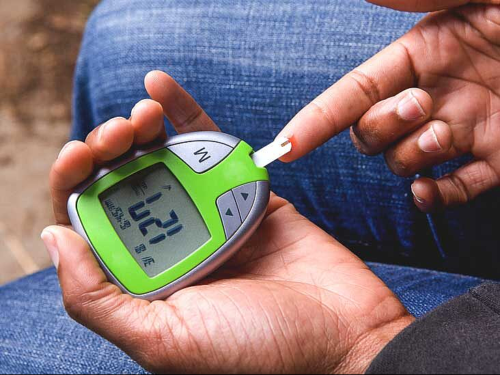Diabetes has been categorized as the fifth deadliest disease in this country and sadly, the Black community is directly in its line of fire. According to the American Diabetes Association, 4.9 million Blacks have been diagnosed with the disease. In addition, the complications that arise from diabetes also hit our community hardest. Diabetes retinopathy that affects the eyes is 46 percent more prevalent and kidney failure is 2.6 times more likely to occur in Blacks than in whites who also suffer from the chronic ailment.
There are two main types of diabetes. Folks with type 1 diabetes don’t make insulin. Type 2 sufferers do make insulin but they do not effectively use the insulin they produce. Although there is no cure for type 1 diabetes those who have the second type, may be able to reverse their condition through diet, exercise, and healthy lifestyle changes. The bottom line is that glucose is the fuel that feeds your body’s cells, but to enter your cells it needs a key; insulin is that key.
Type 2 diabetes accounts for about 90 to 95 percent of all diagnosed cases of diabetes. Even though many are afflicted by the disease, they are oftentimes clueless about their condition. Here are some facts about type 2 diabetes that might surprise you:
- What is an A1C test? The A1C test is a common blood test used to diagnose type 1 and type 2 diabetes. An A1C test result reflects your average blood sugar level for the past two to three months. Specifically, the A1C test measures what percentage of hemoglobin proteins in your blood are coated with sugar (glycated). Hemoglobin proteins in red blood cells transport oxygen.
The higher your A1C level is, the poorer your blood sugar control and the higher your risk of diabetes complications. If you have prediabetes, you have a higher risk of developing diabetes and cardiovascular disease.
Results for a diagnosis are interpreted as follows:
Below 5.7% is normal.
5.7% to 6.4% is diagnosed as prediabetes.
6.5% or higher on two separate tests indicates diabetes.
- Can you eat sweets? No need to pass on that Hershey’s Kiss! You can’t scarf down every candy bar in sight. According to the American Diabetes Association, as long as you maintain a healthy diet and incorporate some form of daily exercise, you can gift yourself with a sweet treat every now and then as a reward but do not overindulge!
- Is it deadly? The better you have your diabetes under control, the lower your risk for developing associated conditions that may shorten your lifespan. The top cause of death for people with type 2 diabetes is cardiovascular disease.
- Are there always symptoms? Not in all cases. Nearly a third of sufferers do not have a telltale clue that they have the disease.
- What are some of the more common symptoms? Extreme thirst but wait, there’s more. Folks with high blood sugar are typically always wanting to quench their thirst. The other symptoms of diabetes to look out for are dry mouth, extreme hunger, frequent urination, blurred vision, and headaches. The disease can also cause itching, numbness, and tingling in your hands and feet, weight gain, frequent yeast infections in women, and erectile dysfunction in men.
- Can children get it? Unfortunately, yes. Type 2 diabetes is no longer considered adult-onset. Anyone can get it.
- Can you prevent it? Absolutely! You don’t just get type 2 diabetes overnight. Folks are first diagnosed with prediabetes. At this stage, a doctor will give you fair warning to make some necessary and positive health changes that include diet and exercise in order for you to not cross over! Going the healthy route once you’ve been told you are prediabetic can cut your risk of actually getting the disease by a whopping 71 percent if you’re age 60 and older.
- Can being overweight and having a family history put you at risk? Yes but wait there’s more. Inactivity, age, and being Black, Pacific Islander, American Indian or Latino, puts you at a higher risk for getting diabetes.
- Can it lead to depression? Sadly, it does. The Centers for Disease Control and Prevention (CDC) states that depression is twice as common among people with the disease but this supposed link is still being researched.











